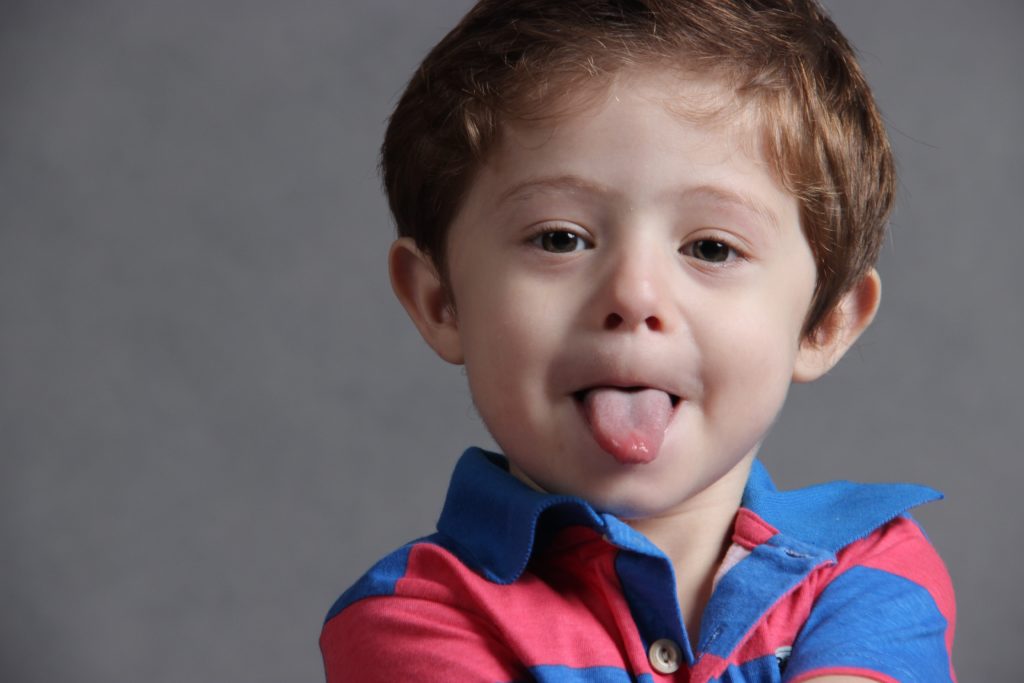Your child has been busily adding new words to her vocabulary for years now. In fact, just yesterday, she used the word vehicle instead of car, and you marveled at how much she has retained and how grown up she’s getting.
But have you thought about your child’s emotional vocabulary? Expanding an emotional vocabulary is something that children need help with. Learn why it’s important for your child to have an emotional vocabulary, and what you can do to expand it.
What Is an Emotional Vocabulary?
Your child’s emotional vocabulary is the collection of words he can access to describe how he or someone else is feeling. Most children understand words like “happy,” “sad,” and “angry,” but they often don’t have an extensive vocabulary to describe their other feelings accurately. This can lead to acting out in other ways — biting, hitting, throwing, etc.
When children can more accurately tell you how they are feeling, they are empowered to control and manage their own feelings better. Likewise, when they can read the emotional cues of other people, they can interact in more appropriate ways, leading to better social situations.
Emotional Vocabulary Needs to Be Taught
This is not a subject where we should assume our children will pick up the necessary components by osmosis. Children need to be taught emotional vocabularies. Telling your child to “use your words” when she hasn’t been taught the appropriate words to use will only leave her confused and frustrated.
There are many ways to build your child’s emotional vocabulary. Try one or two this week!
Make Sure You Have an Emotional Vocabulary
First things first, make sure you understand what you’re going to be teaching. Do you have an extensive emotional vocabulary, or do you resort to the same basic adjectives or behaviors to express your emotions? If your lawnmower keeps jamming, do you curse and scream? Or do you tell yourself you’re frustrated and worried you won’t get the lawn mowed before it gets dark?
There’s no shame if your answer fell closer to the curse and scream spectrum. Our culture hasn’t done a good job of allowing us to have a range of emotions. As parents, it’s important we take the time to understand our emotions, label them, and let ourselves feel them. This will not only allow us to have more empathy and patience for our children’s emotions, it will give us a greater vocabulary to teach our children.
And remember — kids are always watching. When you express your emotions in a healthy way, they’ll try to do the same!
Label the Emotion
Label emotions so children can build their emotional vocabulary. Name what your child might be feeling. “You’re feeling sad because Daddy has to finish cooking dinner and can’t hold you. That makes you feel lonely, doesn’t it?”
Name emotions you see in other people as well. “Your brother is smiling and laughing on the trampoline. He must be feeling happy!”
Identify Emotions in Books
Picture books are a perfect place to learn about and identify emotions. As you read a story to your child, pause occasionally to point to a face. “Gretel looks worried, doesn’t she? I bet she doesn’t know what to do next.”
Play Games
Play emotion charades, in which one of you has to act out a certain emotion and the other one guesses.
Make faces at each other and guess what emotion each person is trying to convey.
Make sounds that go along with emotions, and guess which emotion the sounds match. (“Yippee!” for excited, blowing air out of your mouth for frustrated, “Grrr” for angry, etc.)
Use Art
Let your child illustrate different emotions by asking your child to draw a person who is cheerful, furious, afraid, grateful, joyful, loving, etc.
Turn on some music and ask your child to tell you what emotion he is feeling as he listens. Have him select a color of paint, crayon, or marker and draw, paint, or color as he feels the emotion of the music.
Make a feelings collage by cutting out pictures from magazines.
Move!
Talk about actions that go along with feelings — and then perform those actions. For example, frustrated might make us feel like balling up our fists and stomping. Joyful might make us feel like leaping lightly around the room.
Play music, and ask your child to identify an emotion that she feels through the music. Then ask her to move or dance with that emotion in mind.
Role Play
This is especially helpful if your child tends to have a consistent problem. For example, if a child at preschool tends to take your child’s toy, you can talk about the feelings your child might feel when it happens. Then, you can talk about helpful and unhelpful ways to react. You can then role play the scenario, with your child choosing one of the helpful ways to react. Identify the feelings your child might feel after choosing a helpful method.
Some Helpful Emotion Words
Remember, there are so many more emotions to talk about than happy, sad, and angry!
Use this list to help expand both your and your child’s emotional vocabulary:
- Annoyed
- Afraid
- Worried
- Brave
- Confused
- Grouchy
- Loving
- Lonely
- Nervous
- Peaceful
- Pressured
- Concerned
- Considerate
- Kind
- Careful
- Disappointed
- Uneasy
- Uncertain
- Thankful
- Unhappy
- Secure
- Surprised
- Puzzled
At UDA Creative Arts Preschool, we work to help children identify their emotions and express them in healthy ways. Give us a call at (801) 523-5930, or sign up to come to one of our open houses.



